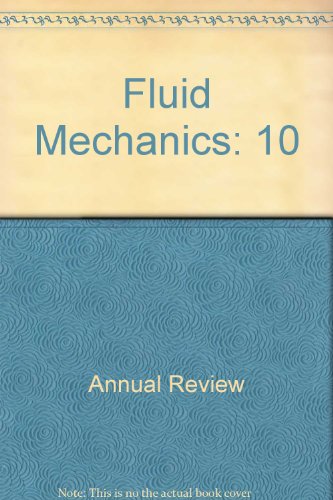Sharp Interface Methods for Simulation and Analysis of Free Surface Flows with Singularities: Breakup and Coalescence
IF 30.2
1区 工程技术
Q1 MECHANICS
引用次数: 6
Abstract
A common feature of many free surface flows—drop/bubble breakup or coalescence and film/sheet rupture—is the occurrence of hydrodynamic singularities. Accurately computing such flows with continuum mechanical, multidimensional free surface flow algorithms is a challenging task given these problems’ multiscale nature, which necessitates capturing dynamics occurring over disparate length scales across 5–6 orders of magnitude. In drop breakup, the thinning of fluid threads that form and eventually pinch-off must be simulated until the thread's radius is about 10 nm. When two drops approach one another, the thickness of the fluid film separating them must fall below 10 nm before coalescence is said to have occurred. If the initial drop radii are 1 mm, simulations must remain faithful to the physics as thread radius or film thickness falls from 10−3 m to below 10−8 m. Here we review significant findings in interfacial flows with hydrodynamic singularities spearheaded by sharp interface algorithms. These multidimensional algorithms can achieve resolution that to date has only been possible with the use of simple 1D evolution equations. Expected final online publication date for the Annual Review of Fluid Mechanics, Volume 55 is January 2023. Please see http://www.annualreviews.org/page/journal/pubdates for revised estimates.具有奇点的自由表面流动模拟与分析的锐界面方法:破裂与聚并
许多自由表面流动的一个共同特征——水滴/气泡破裂或聚并和膜/薄片破裂——是水动力奇点的出现。考虑到这些问题的多尺度性质,使用连续力学、多维自由表面流算法精确计算此类流动是一项具有挑战性的任务,这需要捕获5-6个数量级的不同长度尺度上发生的动态。在液滴破碎过程中,必须模拟形成并最终被挤压的流体线的变薄过程,直到线的半径约为10纳米。当两个液滴彼此靠近时,分离它们的流体膜的厚度必须降到10纳米以下,才会发生聚并。如果初始滴半径为1毫米,当螺纹半径或膜厚度从10−3米下降到10−8米以下时,模拟必须保持忠实于物理。在这里,我们回顾了在具有流体力学奇点的界面流动中由尖锐界面算法带头的重要发现。这些多维算法可以实现迄今为止只有使用简单的一维演化方程才能实现的分辨率。预计流体力学年度评论第55卷的最终在线出版日期为2023年1月。修订后的估计数请参阅http://www.annualreviews.org/page/journal/pubdates。
本文章由计算机程序翻译,如有差异,请以英文原文为准。
求助全文
约1分钟内获得全文
求助全文
来源期刊
CiteScore
54.00
自引率
0.40%
发文量
43
期刊介绍:
The Annual Review of Fluid Mechanics is a longstanding publication dating back to 1969 that explores noteworthy advancements in the field of fluid mechanics. Its comprehensive coverage includes various topics such as the historical and foundational aspects of fluid mechanics, non-newtonian fluids and rheology, both incompressible and compressible fluids, plasma flow, flow stability, multi-phase flows, heat and species transport, fluid flow control, combustion, turbulence, shock waves, and explosions.
Recently, an important development has occurred for this journal. It has transitioned from a gated access model to an open access platform through Annual Reviews' innovative Subscribe to Open program. Consequently, all articles published in the current volume are now freely accessible to the public under a Creative Commons Attribution (CC BY) license.
This new approach not only ensures broader dissemination of research in fluid mechanics but also fosters a more inclusive and collaborative scientific community.

 求助内容:
求助内容: 应助结果提醒方式:
应助结果提醒方式:


